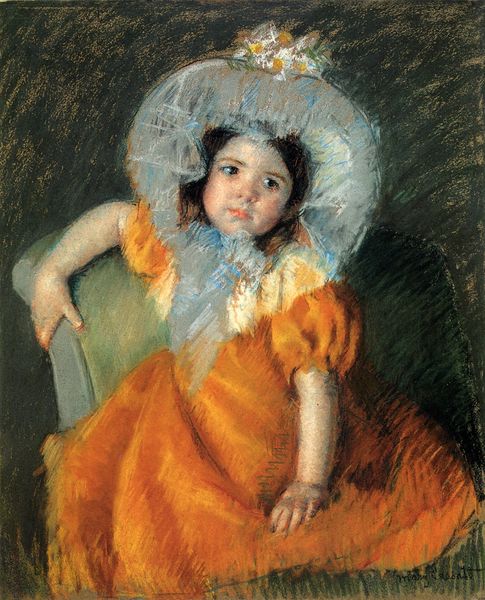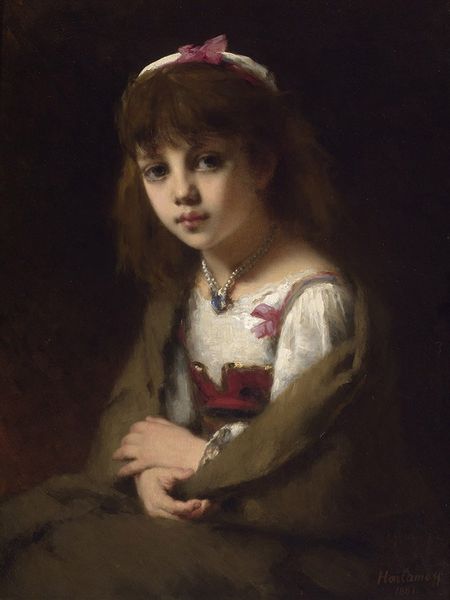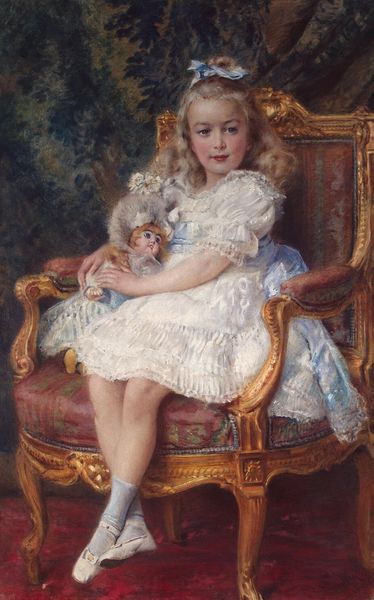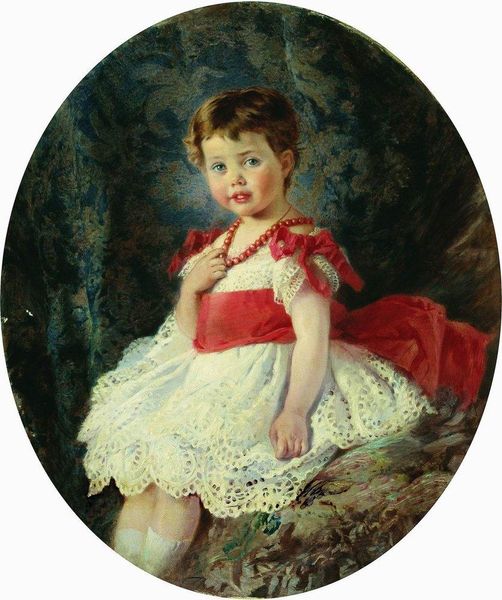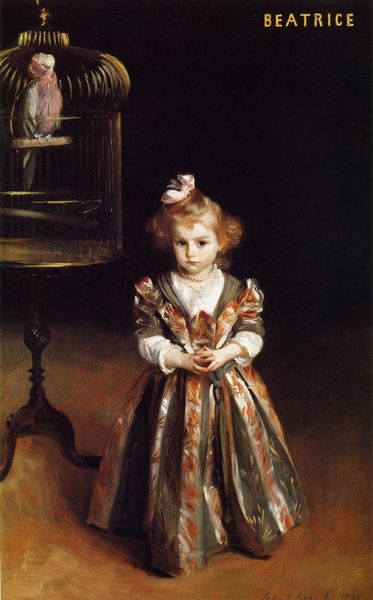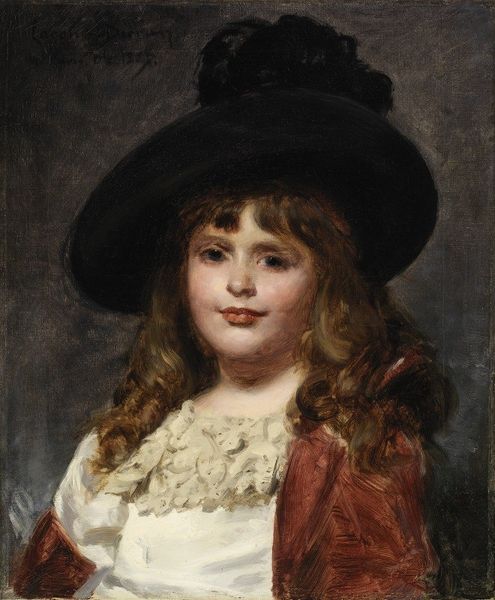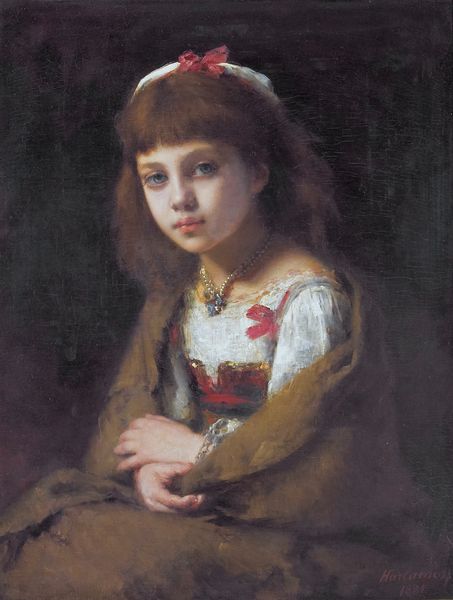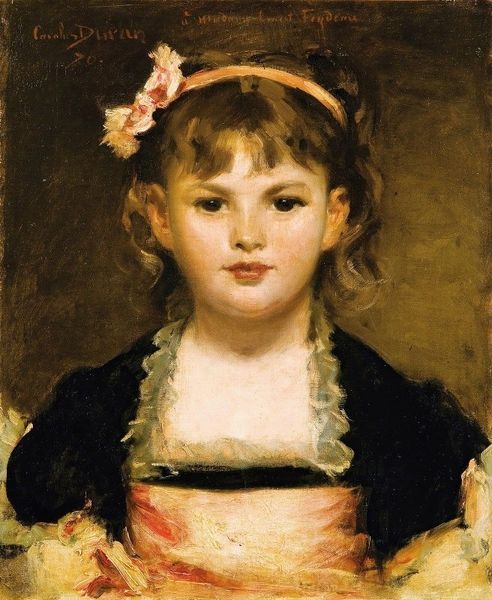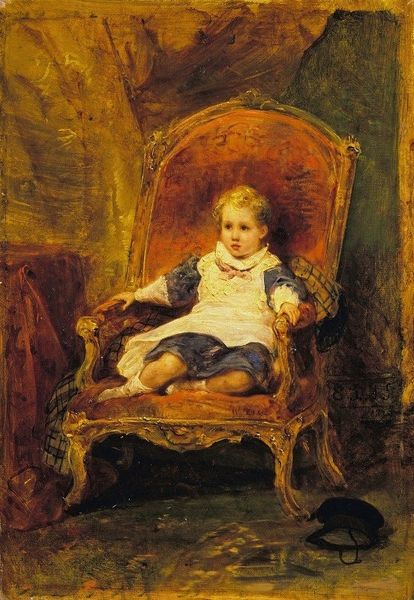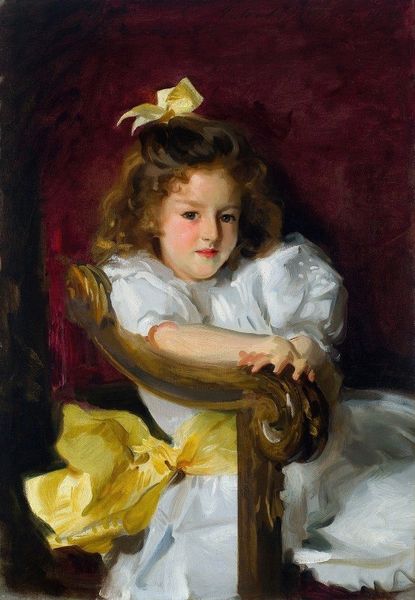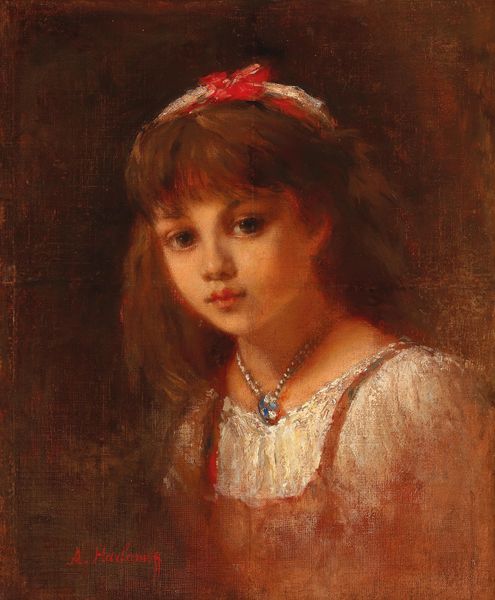
Copyright: Public domain
Curator: Let's discuss "Child Portrait" by Konstantin Egorovich Makovsky, completed in 1879. It's an oil painting firmly situated within both Romanticism and Academic art traditions. Editor: My immediate impression is one of ornate constraint. The child, beautifully rendered as she is, seems overwhelmed by the excess of lace and fabric. There's a tension between the innocent gaze and the lavish presentation. Curator: Indeed. The visual language speaks volumes about 19th-century portraiture conventions and social class. Makovsky clearly employs a style rooted in realism alongside romantic idealism. This can be understood as an artwork whose social agency is tied to its commodified nature, the portrait's purpose, as such, resides as proof of wealth. Consider, for example, where his patrons fit in the imperial structure of the Russian empire and their financial capacity to acquire expensive goods for themselves. Editor: I'm fascinated by the textures—the velvety smoothness of the child's skin juxtaposed against the almost aggressively detailed lace of the dress. From a purely formal perspective, it is compelling; Makovsky plays with light and shadow in a masterful manner. The composition is interesting, an oval that draws you right to her eyes, but the darkness behind and beneath emphasizes her isolation and stillness, her being a commodity almost. Curator: From a materials standpoint, oil paints gave artists tremendous control to build those layered visual textures and intricate depictions of fabrics and skin, reflecting economic investments into production and commerce. It's important to remember what it took to make this possible—the social dynamics involving child labour in factories and access to trade routes for raw materials. Editor: I concede the socioeconomic background you paint adds necessary depth. Still, I cannot ignore the work's skillful application of formal conventions: a sophisticated arrangement of colors that lead the eye through a captivating scene, proving itself worthy of consideration, and pleasure, in and of itself. Curator: Fair enough, perhaps our diverging perspectives underscore the complexities of this artwork—a meeting point between aesthetics, economic factors, and representations of class status in tsarist Russia. Editor: Ultimately, it seems a successful dialogue between formal artistry and the cultural circumstances it reflects. Thank you.
Comments
No comments
Be the first to comment and join the conversation on the ultimate creative platform.
